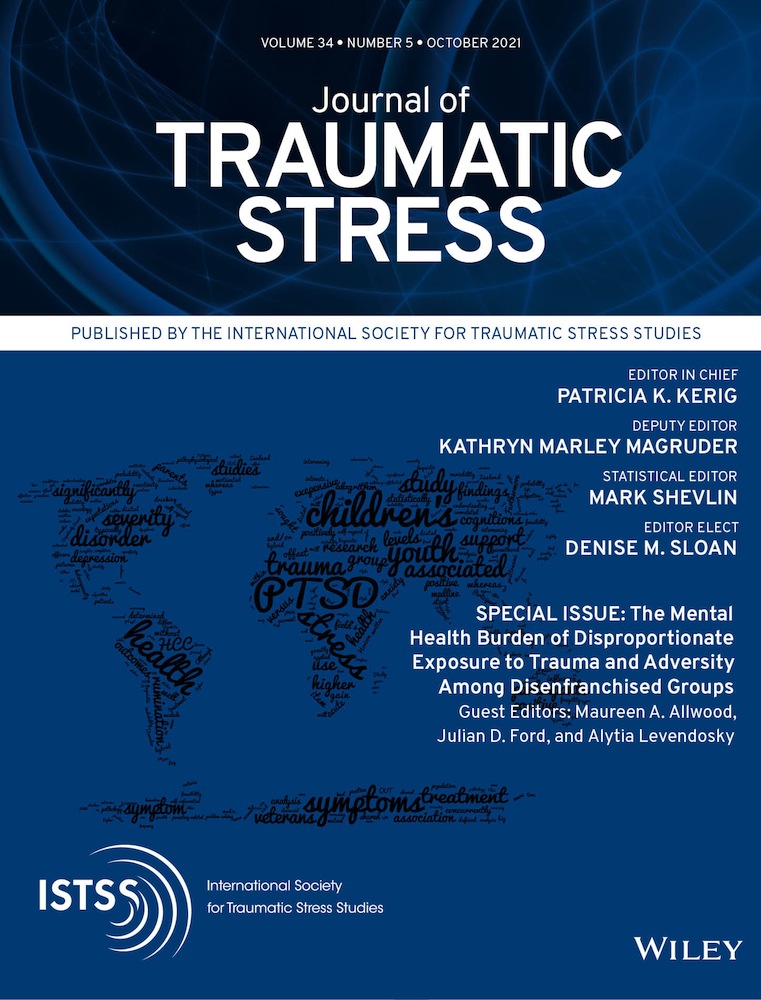Using a Continuous Traumatic Stress Framework to Examine Ongoing Adversity Among Indian Women from Slums: A Mixed-Methods Exploration
The authors have no known conflicts of interest to disclose. This research was funded by the Center for Global Education and Office of Research and Sponsored Programs at the University of Tulsa.
Abstract
enGender-based violence (GBV) is pervasive among Indian women. Although posttraumatic stress disorder (PTSD) is a psychological outcome of GBV, it might not accurately capture the experiences of Indian women from slums, who face continued stressors (i.e., ongoing adversity). Continuous traumatic stress (CTS) is a framework used to characterize experiences of ongoing adversity. This mixed-method study investigated the applicability of the CTS framework for characterizing ongoing adversity and the psychological impacts of ongoing adversity among GBV-exposed Indian women from slums. Indian women from slums (N = 100) completed all study measures; a subset (n = 47) completed qualitative interviews analyzed using deductive coding and thematic analysis to identify core CTS characteristics. To examine the impact of ongoing adversity on participants’ psychological symptom severity in the full sample, we performed an ANCOVA on PTSD symptom severity and an ANOVA on anxiety and depression symptom severity. Interviewed participants described the context of stressor conditions as pervasive, reported stressor conditions existed in the present or future rather than the past, had difficulty discriminating between real versus imagined threat, and demonstrated absent external protective systems. Results indicated that ongoing adversity was associated with significantly more severe PTSD, F(1, 96) = 9.86, p < .001; anxiety, F(1, 98) = 20.31, p < .001; and depression, F(1, 98) = 25.24, p < .001. The CTS framework is valuable for characterizing ongoing adversity and its related mental health impacts among GBV-exposed Indian women from slums. Assessment and intervention in slum communities must account for ongoing adversity.
抽象
zhTraditional and Simplified Chinese Abstracts by the Asian Society for Traumatic Stress Studies (AsianSTSS)
簡體及繁體中文撮要由亞洲創傷心理研究學會翻譯
Traditional Chinese
使用連續創傷性壓力框架來研究印度貧民窟婦女的持續逆境:
一個混合方法的探索
摘要
基於性別的暴力(GBV)在印度婦女中普遍存在。儘管創傷後壓力(PTSD)是GBV的一種心理結果, 但它可能無法準確地反映來自貧民窟的印度婦女的經歷, 她們面臨著持續的壓力(即持續的逆境)。持續創傷性壓力(CTS)是一個用於描述持續逆境經歷的框架。這項混合方法的研究調查了CTS框架對描述持續逆境的適用性, 以及持續逆境對貧民窟遭受GBV的印度婦女的心理影響。來自貧民窟的印度婦女(N = 100)完成了所有的研究措施;一個子集(N = 47)完成了定性訪談, 用演繹編碼及主題分析來確定CTS的核心特徵。為了研究全樣本中持續逆境對參與者心理症狀嚴重程度的影響, 我們對創傷後壓力症狀嚴重程度進行了方差分析, 對焦慮及抑鬱症狀嚴重程度進行了方差分析。受訪者將壓力條件的背景描述為普遍存在, 說壓力條件存在於現在或未來, 而不是過去, 難以區分真實與想像中的威脅, 並表現出缺乏外部保護系統。結果表明, 持續的逆境與創傷後壓力的嚴重症狀有關, F(1, 96)=9.86, P<0.001;焦慮, F(1, 98)=20.31, P<0.001;及抑鬱, F(1, 98)=25.24, P<0.001。 CTS框架對描述持續的逆境及其對貧民窟中遭受GBV的印度婦女的相關心理健康影響很有價值。對貧民窟社區的評估及干預必須考慮到持續的逆境。
Simplified Chinese
使用连续创伤性压力框架来研究印度贫民窟妇女的持续逆境:
一个混合方法的探索
摘要
基于性别的暴力(GBV)在印度妇女中普遍存在。尽管创伤后压力(PTSD)是GBV的一种心理结果, 但它可能无法准确地反映来自贫民窟的印度妇女的经历, 她们面临着持续的压力(即持续的逆境)。持续创伤性压力(CTS)是一个用于描述持续逆境经历的框架。这项混合方法的研究调查了CTS框架对描述持续逆境的适用性, 以及持续逆境对贫民窟遭受GBV的印度妇女的心理影响。来自贫民窟的印度妇女(N = 100)完成了所有的研究措施;一个子集(N = 47)完成了定性访谈, 用演绎编码及主题分析来确定CTS的核心特征。为了研究全样本中持续逆境对参与者心理症状严重程度的影响, 我们对创伤后压力症状严重程度进行了方差分析, 对焦虑及抑郁症状严重程度进行了方差分析。受访者将压力条件的背景描述为普遍存在, 说压力条件存在于现在或未来, 而不是过去, 难以区分真实与想象中的威胁, 并表现出缺乏外部保护系统。结果表明, 持续的逆境与创伤后压力的严重症状有关, F(1, 96)=9.86, P<0.001;焦虑, F(1, 98)=20.31, P<0.001;及抑郁, F(1, 98)=25.24, P<0.001。 CTS框架对描述持续的逆境及其对贫民窟中遭受GBV的印度妇女的相关心理健康影响很有价值。对贫民窟小区的评估及干预必须考虑到持续的逆境。




